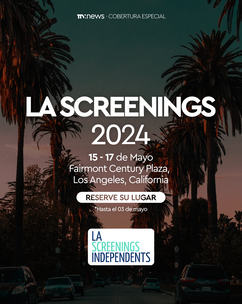Francisco Ramos, VP of Netflix Original Content for Latin America, spoke to ttvnews about the platform’s original production strategy in the region, the success of Who Killed Sara? and the search for talent in the face of increased competition.
Netflix is on track to close its most ambitious year to date in Latin America in 2021 in terms of original production. And the fruits are beginning to show: the premiere of Who Killed Sara? in March became one of the most popular worldwide to emerge from the LatAm Originals team. And now the platform is going for more.
To discuss this success, the platform’s original production strategy in the region and the war for talent in the face of increased competition, ttvnews spoke with Francisco Ramos, VP of Netflix original content for Latin America.
Since Netflix began local production, Latin America has had major international hits, but perhaps none of the magnitude of Who Killed Sara? Did LatAm finally find its own Money Heist with this series?
Money Heist is a phenomenon, but when we give voice to great creators around the world, the phenomenon repeats itself more and more frequently, as happened to us with Lupine and with Who Killed Sara? The global success of Who Killed Sara? is an enormous incentive for Latin American creators, who see the world as a potential market and, furthermore, it confirms again that great stories are universal. We want to provide a global platform for Latin American stories to be enjoyed by people around the world.
Are you surprised by how successful it has been? Did you expect something like that?
Yes, we already saw from the first editions that we had something special, although to be honest I never thought it would be so overwhelming. Who Killed Sara? has all the elements: it is the perfect combination of thriller and melodrama with an excellent team in front of and behind the cameras. The reception we saw internationally showed us once again the power of an authentic story regardless of the country of origin.
Do these metrics change future plans on what type of productions to order from the region?
I think the success of Who Killed Sara? confirms that our strategy is on the right track and we will continue with our plans, betting on local stories with great Latin American talents such as José Ignacio Valenzuela, with whom we are working on his new story, Donde hubo fuego, and in the third season of Who killed to Sara?.
With how many hours of original local production will Netflix close 2021? How does that figure compare to 2020 and prior years?
2021 has been our most ambitious year in Latin America so far in terms of investment. I do not have a number of hours to share, but I can give you the example in Mexico where we announced the investment of 300 million dollars in more than 50 original productions, local or global, filmed in Mexico in 2021.
In that sense, how do you project 2022? Will local original production continue to increase?
We will continue to grow and expand our footprint in the region.
Will we see new territories with Netflix Originals in the coming months?
At this moment, we have productions in Argentina, Mexico, Brazil, Colombia, Peru and Chile. This year, the Distancia de rescate, a Netflix film filmed in Chile by Peruvian director Claudia Llosa, based on the novel of the same name by Argentine author Samanta Schweblin, who co-wrote the script with Llosa, will be released. And in April of this year we announced 42 días en la oscuridad, the first Netflix series in Chile. In Peru, this year we announced the official start of production of the first Peruvian film, a romantic comedy produced by Tondero that takes place in the cities of Cusco, Puno and Paracas. Very soon we hope to announce more projects in Chile, Peru and Uruguay.
Of those in the works that can be talked about, what are the projects that you are most excited about today?
In August we have scheduled the premiere of some Latin American titles that we are very excited about. On August 13, El Reino, an eight-episode Argentine thriller created by Marcelo Piñeyro and Claudia Piñeiro and starring Chino Darín, Nancy Dupláa, Joaquín Furriel, Peter Lanzani, Mercedes Morán and Diego Peretti, will be released. In Mexico, we have an incredible series created and directed by Diego Luna, Todo va a estar bien. The series takes place in Mexico City and is a dramedia that reflects on the idea of family and relationships today. In Brazil, the film Diarios de intercambio, starring Larissa Manoela, Thati Lopes and Bruno Montaleone, and the highly anticipated documentary João de Deus: Cura e Crime, will premiere.
How does Netflix work to be able to listen to all creators and producers given the high demand that exists for working with Netflix?
Ideas come through members of our content team, who are dedicated to finding and developing projects. This team, based here in Latin America, has experts in documentaries, series, cinema and many more and they work closely with the best producers, screenwriters, directors who are based in different Latin American countries. Having local offices in more and more countries also brings us closer to the creative community and our members.
Now that competition has increased dramatically in the original premium production ecosystem, do you find it harder to find great stories or work with the best talent? Are you living a “war” for talent?
During the last few years we have been able to build excellent relationships with the best producers, creators, screenwriters and directors in Latin America. Hand in hand with them we have grown to just over 38 million members in the region. The bonds that we have built with talent, the experience that our teams have acquired working together and our commitment to the diversity of views and points of view, allow us to continue bringing the best Latin American content to our members. We are working with countless talented writers, producers and directors and at the same time beginning to develop new voices, new talents, the future. Obviously, we cannot deny that competition is multiplying, which on the one hand forces us to be better and on the other proves that, indeed, producing and programming local content is the way.












